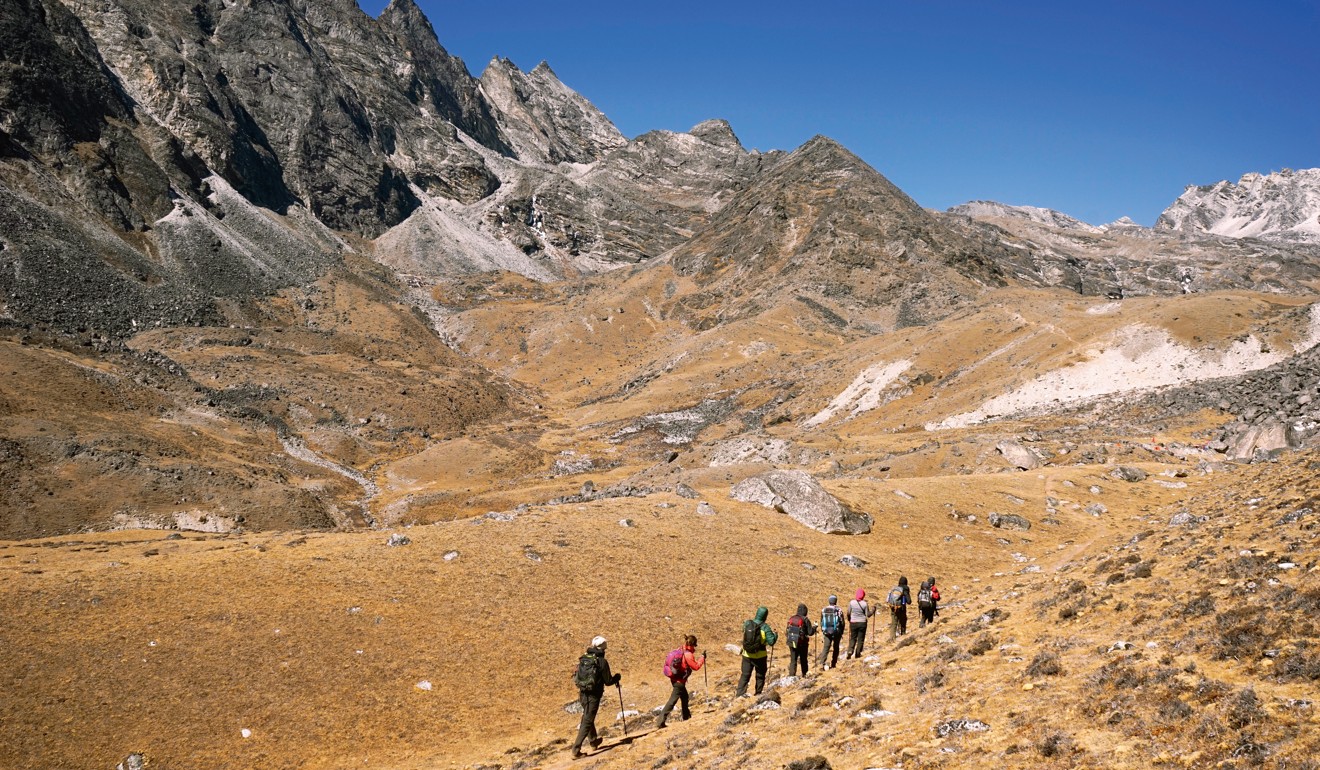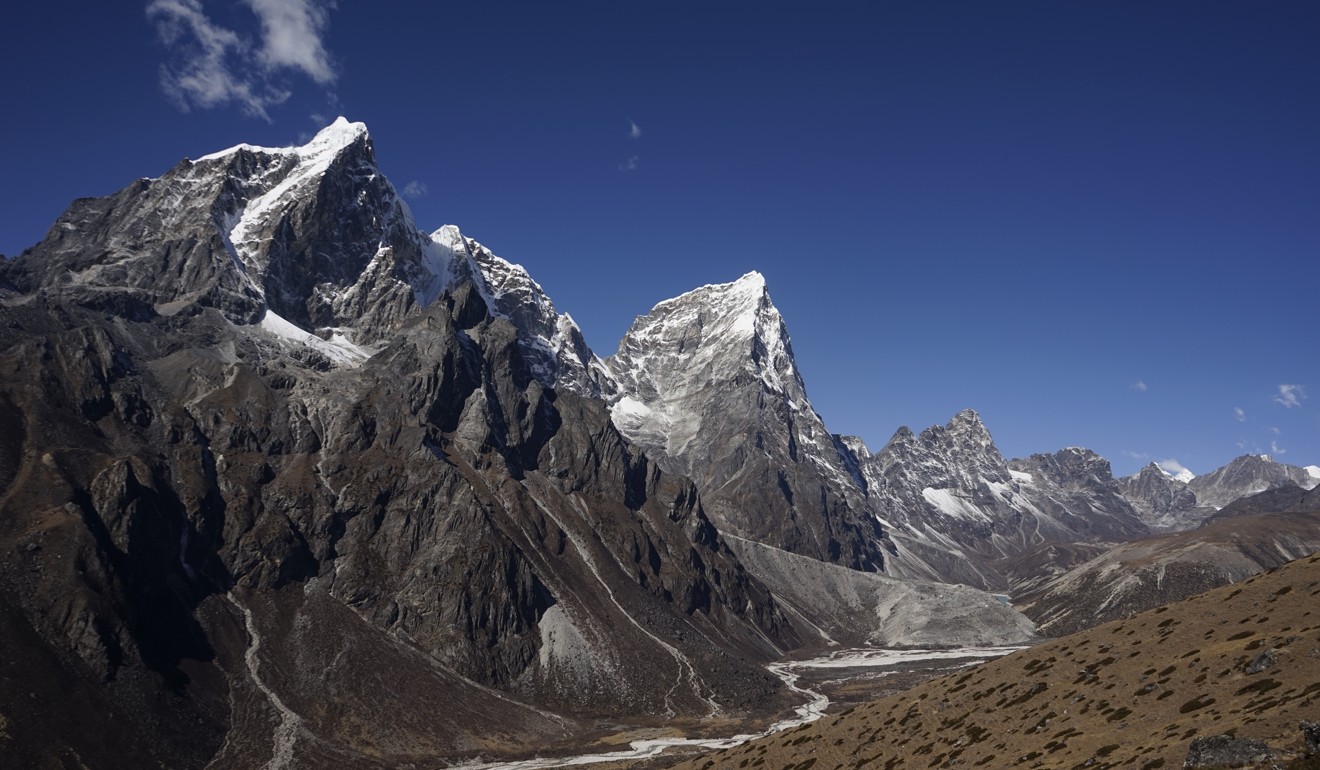
The high life: how to do Mount Everest without being a pro
It has never been easier – or more luxurious – to visit the countryside around the mountain
Mount Everest is irresistible, yet dangerous. Most will not stand on its summit. Happily, visiting the foot of the mountain has never been simpler, with treks and tours in the surrounding Nepalese countryside revealing a stark landscape that is even dotted with a few luxury resorts, complete with champagne to go with the views.
I came to the Khumbu, as the region of Nepal around Everest is called, in late October, the heart of the trekking season. Together with 10 others, I was booked on a trek with World Expeditions. Part of the trek included a visit to Everest Base Camp, the closest an average tourist can come to Everest itself. Known as EBC for short, it is the starting point for attempts on the southern (Nepal) side of the mountain. There are also two base camps on the northern (China) side – one off-limits to tourists, who are driven to a spot not far away called a “base camp” for the purposes of tourism. There you can send a postcard and even stay for the night. The view is stunning but tranquil it is not. There is much more satisfaction in an approach up through the Khumbu, following at least part of the route taken by the 1953 British Expedition that succeeded in putting Sherpa Tenzing Norgay and Sir Edmund Hillary on top of the mountain for the first time. Precisely how you follow this route depends on your commitment, time and budget.
The most faithful trekkers walk. You can start in exactly the spot that Hillary and Tenzing started but most visitors save themselves a few days and fly, as we did, into Tenzing-Hillary Airport in the small town of Lukla, at an elevation of 2,860 metres. The airport itself is a highlight, and after we had landed to spontaneous whoops and clapping, we watched other aircraft struggle upwards into the thin air off an inclined runway that looks ready to slip right off the hillside itself. From there, it was three-day walk at a gentle pace up to Namche Bazaar, the largest settlement in all Khumbu, around 600 metres above Lukla. The pace was intentionally slow, which helped our bodies adapt to the high altitudes. I had walked up this stretch in less time on a previous visit, but our guides were right – I suffered no repeat of my altitude headache on arrival.
Namche Bazaar, with just more than 1,000 residents, counts as Big City in the Khumbu. Once a trading post between herders on the mountains and farmers from the valley bottoms, it is now essentially a large outfitting post for trekkers, with fleeces and puffy jackets, real and fake, on every corner. Family-run stores sell cheap thangka paintings next to western chocolate next to crampons. You can brush up on your mountain lore at the local Irish pub, which claims the title of “highest Irish bar in the world”.

In Namche, we had our first acclimatisation day, making our way up to the school and hospital built by Sir Edmund. We also got our first look at the mountain at the end of the valley. Still many kilometres away, Everest’s squat rocky pyramid was visible, although overshadowed by the photogenic Ama Dablam (6,812 metres), which rises dramatically above the valleys and is fluted with ice and snow. An incredible view of Everest may be your aim, but it is a sure thing that Ama Dablam will hog many of the shots of your trip. Walking up to and past it over a number of days, it changed form but remained irresistible. While Everest’s dark triangle grew almost imperceptibly on the horizon, our eyes constantly swivelled right to the snow-draped “mother” and “child” peaks of Ama Dablam.
We were about to make our own departure, from the standard EBC route that follows the Khumbu Valley up and back. We were a reasonably fit and motivated bunch, and we had all booked onto the High Passes Trek, which tackled a trio of routes between the major valleys. This would get us away from the relative crowding on the main trail and boost the physical challenge. The challenges of trekking in this area and this altitude go beyond just the exertion. Despite our sensible pace, altitude and other aspects of trail life lay members of the party low.

Subal, our trek leader, had warned against succumbing to the delights of village bakeries on the way up and several of our number had paid the price for unfamiliarity with the local bug culture. Khumbu Throat was rife too, an irritation brought on by trail dust consisting of donkey and yak dung, stirred up by tramping feet on the trail.
After six days, we left the Khumbu Valley and began to climb towards the first – and highest – of our three passes: Kongma La, at 5,500 metres. A steep descent on the other side brought us to the moraines of the Khumbu Glacier, a grey river of rock flowing from its source, Mount Everest. It took a couple of hours to cross the shifting rock to Lobuche, where we joined the EBC route once more. The passes of Cho La and Renjo La were to come, both over 5,400 metres and offering their own challenges. Day 10 took us up to Gorak Shep, the highest settlement in the valley and staging post for EBC. After seemingly endless ups and downs over pile upon pile of debris, suddenly we were there. There was no fanfare in arriving; prayer flags and signs announced we were at Everest Base Camp, altitude 5,364 metres.

Here, you are closely surrounded by the world’s highest mountains. Directly in front is the mighty snow-crusted Nuptse, which, at 7,861 metres, is a mere outlier but high enough to hide Lhotse, the world’s fourth-highest mountain. To the left, a huge white pyramid guarded the approach to Everest’s West Ridge, which hides the actual summit of Everest.
In October, Everest Base Camp is devoid of tents. In truth, it is the campsite from hell; the place is covered in glacial rock and debris. It seems impossible to comfortably pitch a tent here.
Immediately above the camp, there is a slow breaking tsunami of ice called the Khumbu Icefall. It is a massive, ever-shifting labyrinth of ice whose hazards have to be traversed multiple times on any Everest summit bid using the usual Southeast Ridge route. The scale and desolation of the place is sobering. Around me, people were going mad with selfies, but I was trying to get my head around the effect that this foreboding place must have on the psyche of those come to climb Everest. I was happy therefore that before leaving, we climbed to the next most famous viewpoint of Everest, Kala Pattar.

Dark and barren the hill may be – the name means Black Rock – but the view of Everest and scores of other mountainous giants deserves its fame. At this place, the Khumbu Icefall, so hazardous looking up close, is mere crinkles on the face of the glacier below the glory of the snowy Himalayan faces. Everest reigns supreme here – and dangerously irresistible.
The Mount Everest fly-past
For those short on time, several local airlines offer regular mountain flights using fixed wing aircraft. These whizz you up to the Khumbu from Kathmandu and back in an hour, weather permitting.
For a really close look, take a helicopter. These usually make the journey in two hops, stopping first at Lukla and then on to EBC and Kala Pattar. “There is a helipad at Base Camp only in expedition season – April to June,” says Samsher Parajuli whose company, Global Holidays Adventure, runs sightseeing flights. “Travellers feel that they are going to touch Everest,” he says.
Daman Pradhan’s company Yeti Holidays also runs helicopters up to the area. He says most of his guests prefer the view from the helipad on Kala Pattar. “The normal trekking route doesn’t pass there. It’s a spectacular piece of flat land from where there are gorgeous views of the entire range. But this landing would be for not more than 10 minutes as you cannot shut off the engines at this height.” Another possibility is a trek up from Lukla and a flight back. Note, that this only works by hiking in to fly back – flying in to hike back will not let you acclimatise for the journey.

Uniquely, Yeti Holidays have a resort at 5,500 metres on Kongde, with views all the way to Everest. You can wrap up your scenic flight or hike-and-flight with their Everest for Breakfast option, toasting the panorama with champagne and all the trimmings.
Once a year, Everest Skydive, based at an airstrip just above Namche Bazaar, offer a package of three helicopter jumps, two over Syangboche and one over Ama Dablam. You can book a photographer and videographer too to make sure your adventure is captured from the ground and air. If you are up for a more challenging trek, the High Passes is ideal. World Expeditions offer the classic EBC and High Passes treks among their extensive stable of treks worldwide.
(This article appears in the March issue of The Peak magazine, available at selected bookstores and by invitation.)
